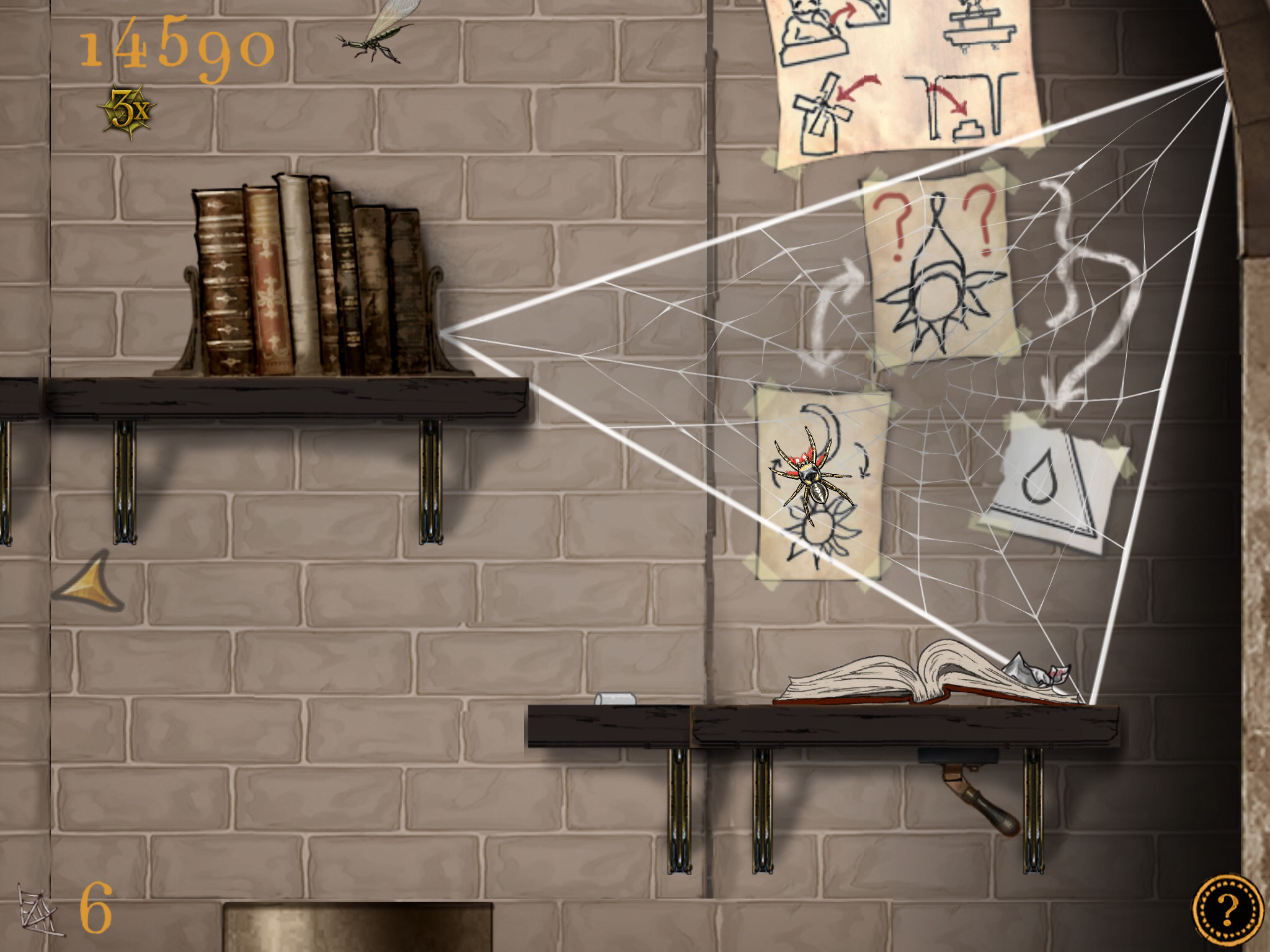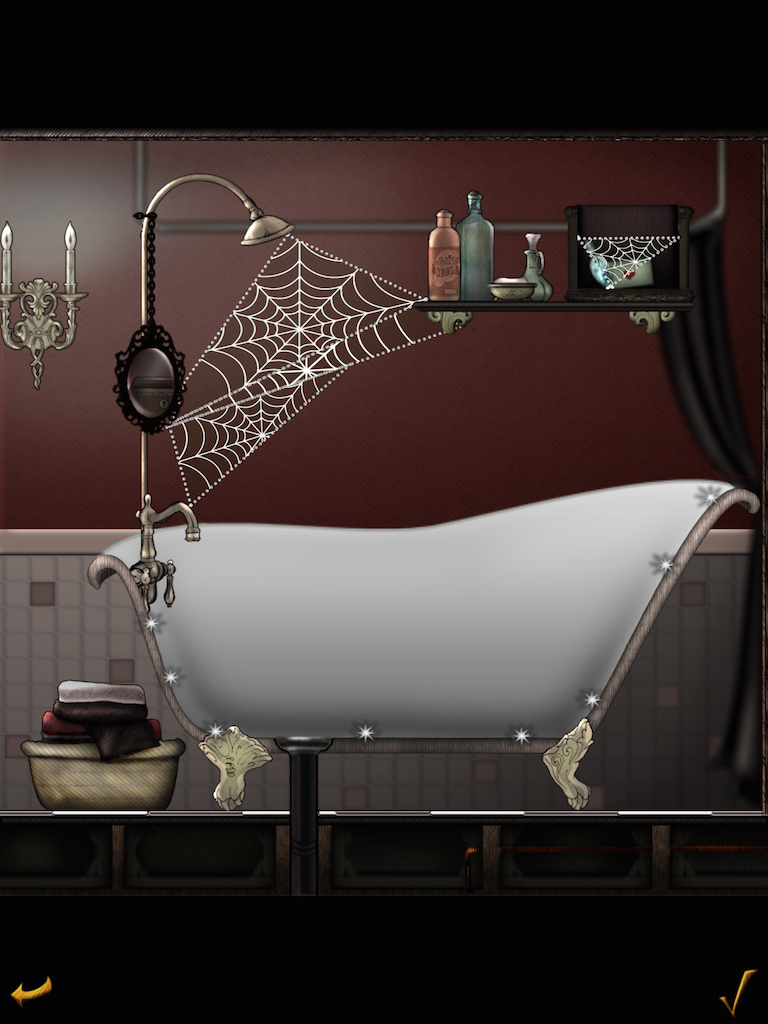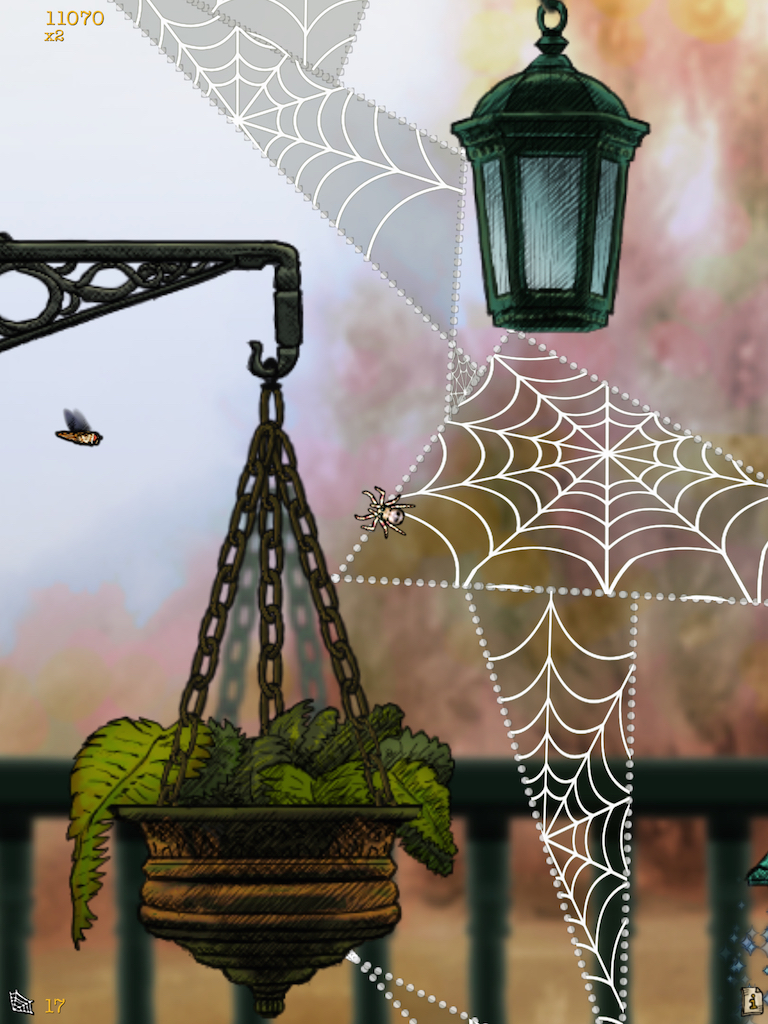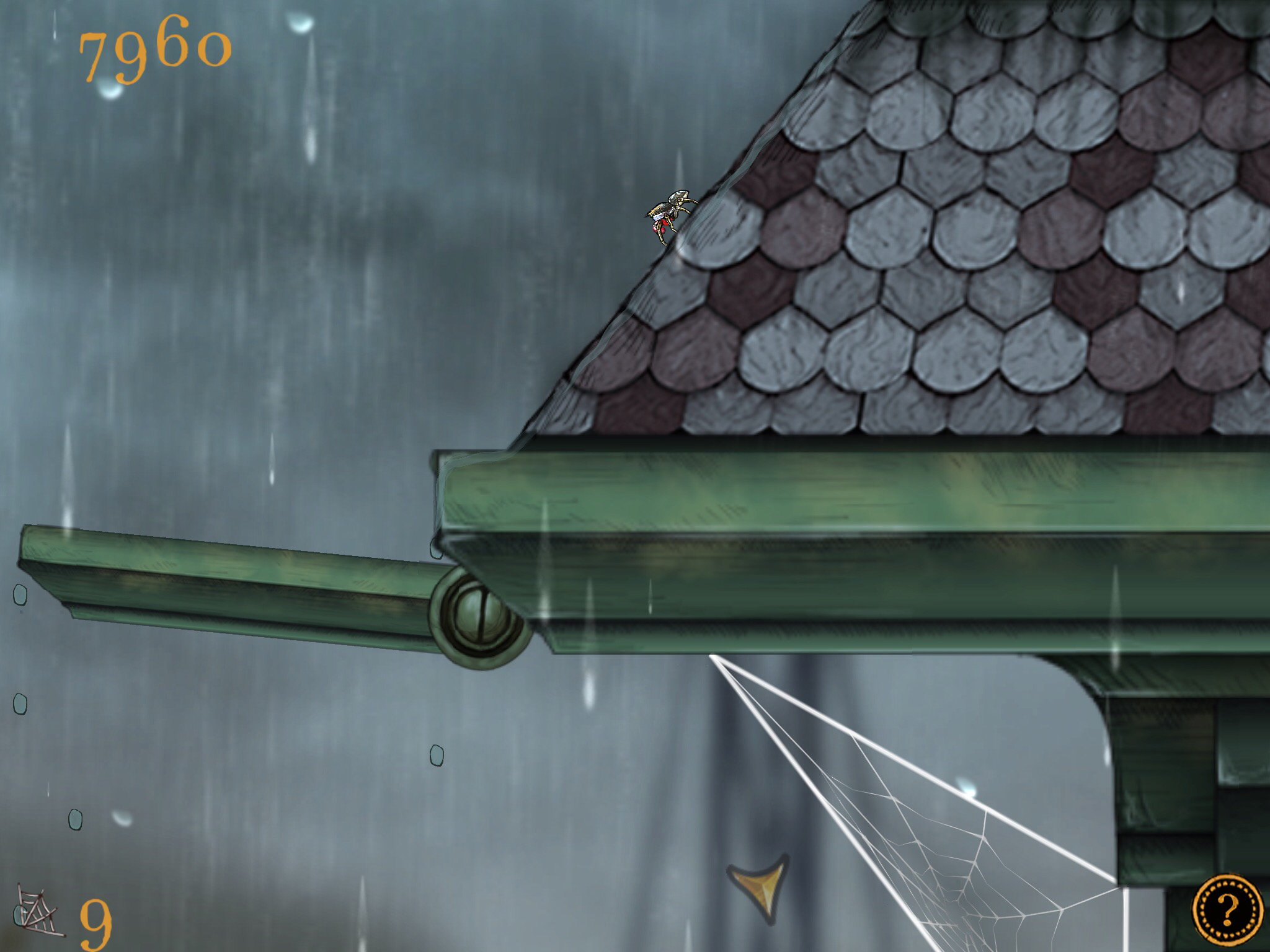 Hello, gentle readers, and welcome to the first edition of the Classic Reload, a semi-random feature where we take a look at classic games from the App Store’s past. Yes, it’s a spin-off of the RPG Reload, but let’s hope this is more Laverne & Shirley than Joanie Loves Chachi. Anyway, the idea here is the same. There are lots of great games in the iOS library that don’t get talked about much anymore, even though they’re still worth playing. When the App Store was fairly young it wasn’t a huge problem, but with several years and countless hundreds of thousands of new apps behind us, some really great games have become invisible to many players. The aim of this column is to pick out some of those games and give them a thorough going-through to see how they hold up in the modern day and take a deeper dive than we may have initially. This will not be a weekly feature, but I do plan to put one out every once in a while. Think of it as a hopefully-pleasant surprise you can expect now and then.
Hello, gentle readers, and welcome to the first edition of the Classic Reload, a semi-random feature where we take a look at classic games from the App Store’s past. Yes, it’s a spin-off of the RPG Reload, but let’s hope this is more Laverne & Shirley than Joanie Loves Chachi. Anyway, the idea here is the same. There are lots of great games in the iOS library that don’t get talked about much anymore, even though they’re still worth playing. When the App Store was fairly young it wasn’t a huge problem, but with several years and countless hundreds of thousands of new apps behind us, some really great games have become invisible to many players. The aim of this column is to pick out some of those games and give them a thorough going-through to see how they hold up in the modern day and take a deeper dive than we may have initially. This will not be a weekly feature, but I do plan to put one out every once in a while. Think of it as a hopefully-pleasant surprise you can expect now and then.
The first game we’ll be looking at is Tiger Style’s Spider: The Secret Of Bryce Manor (Free). A fairly early App Store hit, Spider proved an excellent demonstration of what the iPhone could offer gaming. You play as an average, ordinary spider who has stumbled across a seemingly-abandoned house. Your goal as a spider is simply to satiate your hunger by catching and eating the various insects that inhabit the manor, but your goal as a human being playing a spider might soon go in a different direction. Spider earned plenty of accolades from press and players alike, including a five-star review and a game of the year nod here at TouchArcade. The long-awaited sequel, Spider: Rite Of The Shrouded Moon releases next week on August 6th, making this an opportune time to take a look back at the original.
For many iOS gamers of the time, Spider seemed to come out of nowhere. The game went through review at Apple quicker than the developers had anticipated, so they hadn’t really started to get the word out. It just kind of appeared all of a sudden in August of 2009, and even the forum members here at TouchArcade were giving it a suspicious eye at first. Those suspicions lasted approximately as long as it took for one person to give the game a try, and soon the word of mouth started to spread like a wildfire. People had no way of knowing this at first, but they needn’t have worried much given the pedigree of the game’s developer Tiger Style. A relatively small studio made up of industry veterans who had worked on titles such as the original Thief, Splinter Cell, and more, Tiger Style had developed Spider as their first project over the course of around eight months.
While they weren’t sure exactly what kind of game they wanted to make, Tiger Style wanted to make the most of the iPhone’s features. After brainstorming a number of ideas, the concept of playing as a spider became a clear favorite. The developers focused extensively on making something with solid mechanics that the player could use to explore the environments. Jumping, climbing, and building webs were all accomplished with swipes and taps. While an earlier version of the game also made use of the accelerometer for movement, that aspect didn’t fare so well in playtests, so it was soon replaced with a tap-to-walk system. In the end, they had a character that was both unique and fun to control, which is the first important aspect of what makes Spider a great game, in my opinion.
The biggest timesink for the developers came from the level designs. The heads of Tiger Style, Randy Smith and David Kalina, are admitted perfectionists, and as a result, the development team ended up making multiple revisions of each stage to find the right balance between the visual elements, narrative purpose, and gameplay functionality. I’ll go into detail on this later on, but their hard work in this area paid off greatly. The level designs represent perhaps the most crucial success of the game. The last major piece of puzzle is the titular mystery itself. Once they had nailed down the basic gameplay outline, it was, according to Smith, not that hard to add narrative to the experience. They deliberately chose to put the story in the background, allowing the player to seek it out if they want or leave it if they don’t.
A handful of months after the game’s successful release, Tiger Style released an update that turned the game into a director’s cut version. This update added 10 new levels, a ton of Game Center achievements, the hornet enemy/food, and some new music. The new levels added substantially to the gameplay content, but also served to flesh out more of the mysterious story behind what happened at Bryce Manor. A few months later, Apple released the first iPad, and Tiger Style got hard to work again developing an HD version, as was the style at the time. Not content to simply bring the game over, they added in a new gameplay mode that allowed two players to play together. The HD version released in August of 2010, almost a full year after the iPhone version had launched. At almost the same time, the iPhone version was updated to add retina display support, fast app switching, and other goodies. It would be more than two years before the next update, adding iPhone 5 display support. The most recent update was late last year when the game was fixed for better compatibility with iOS 8. During that time, Tiger Style has also developed and released the amazing Waking Mars (Free), and of course has been working hard on the follow-up to Spider.
It’s not any one particular thing that makes Spider as good as it is. Rather, it’s a lot of things working together. It’s a clever idea, playing as a spider, making your own way around the levels at your own pace and according to your own priorities. The controls feel very good for the most part, making it easy to move, jump, and spin webs of any size, catching flies just like… just like flies. There’s a bit of a problem with jumping and webbing when you’re at the edges of the screen thanks to how later versions of iOS made swipe-on menus work, but I’m not sure there’s a lot Tiger Style can do about that at this point. Even with that quirk, you still feel like you are the master of your environment. You can die, but you’d have to work pretty hard at it. Essentially, you have to starve out from using too much webbing without feeding. Nothing can hurt you, simply vex you temporarily. It’s a great feeling.
More invisible but equally important is the sensational level design. Every level feels like it’s a real place, yet has just the right pieces in the right places to support your web-slinging. There’s a clear, logical progression through the rooms of the house, and the layout actually makes sense without sacrificing enjoyment. There are plenty of hidden nooks and crannies where you can find more food to catch and some interesting hints as to what happened in Bryce Manor. You’ll also need to find those hidden areas to maximize your score and 100% clear everything, so they’re not just there for story. That’s one of the more interesting things about Spider, actually. The game is structured in such a way that you could play it for the story and just skip through a lot of the gameplay, or you could play for the gameplay and pay no attention to the story, and you’ll have fun either way.
The ultimate pleasure, of course, comes from indulging in both. Your spider is oblivious to the things you see. It’s just hungry, and nothing it’s doing for the sake of revealing the sad tale of Bryce Manor is really all that out of the ordinary for a hungry spider. It’s making webs to catch its food, seeking out little spaces and gaps where more lunch awaits, and if it should accidentally open up a secret space along the way, that doesn’t mean much to the little fellow beyond a new place to find eats. It’s all very plausible, too. How often do we open up areas thought to be sealed off only to find cobwebs? Spiders find ways to get into just about anywhere. There’s one area this little spider definitely won’t get into without some human intelligence guiding it, however.
As you play through the game’s 38 levels, you’ll notice a lot of things that contribute to the atmosphere and the subtle narrative. You’ll also come across the occasional object you can interact with. If you find a few specific objects and interact with them in just the right way, you’ll be able to open up an extra area at the end of the game, fulfilling a goal even the manor’s prior owner could not. It’s not a super-tricky puzzle, but you will have to be thorough, pay careful attention to your surroundings, and jump on everything that looks even slightly interactive, just in case. If you miss any of the requirements, you can go back to earlier levels if you want to try again. It’s not a terribly long game by any means, especially if you’re just focusing on plot. The running time sits in that nice zone where it feels long enough to be worth playing in chunks, but short enough to invest a Sunday on if you’re so inclined.
In addition to the story mode, there are other ways to play Spider if you want a little extra spice. Feeding Frenzy mode fills the area with insects and gives you three minutes to catch as many as you can. Hunger mode gives you a hunger gauge that has you perpetually starving, forcing you to move quickly from meal to meal. Precision mode gives you less silk and shorter threads, forcing you to plan your webs carefully, while Sidekicks mode allows you to play with a friend on the same device, teaming up to catch bugs. Many games with a heavy narrative component struggle to create meaningful replay value, but because Spider‘s core mechanics are so sound, these extra modes are actually quite a bit of fun.
You can get either version of Spider for a mere $1.99 these days, and even though it’s just about six years old, Tiger Style has done a great job maintaining it. As a result, it’s still a lot of fun to play and, in my opinion, deserves a place on anyone’s device. The sequel is very likely to blow it out of the water, so if you’ve been waiting, this week might be the right week to play the first game. That said, a good game is usually good forever, so even though its mechanics might be advanced upon in the follow-up, Spider still works just fine on a basic level, and its story is obviously just as strong as ever. If you need any proof of that, I can tell you that, in spite of this article being titled a reload, this was my first time playing through the game, and I couldn’t put it down until I finished it.
That’s just what I think of Spider: The Secret Of Bryce Manor, though. What do you all think? Are you excited for the sequel? Is the first game still relevant today? Please let me know your thoughts by posting in the comments below. While you’re at it, I wouldn’t mind hearing what you fine readers think of the idea of the Classic Reload. Suggestions for future installments will be both considered and appreciated. As for me, I’ll be back in about two days with an RPG Reload, and I’ll be back with another Classic Reload another time. Thanks for reading!






